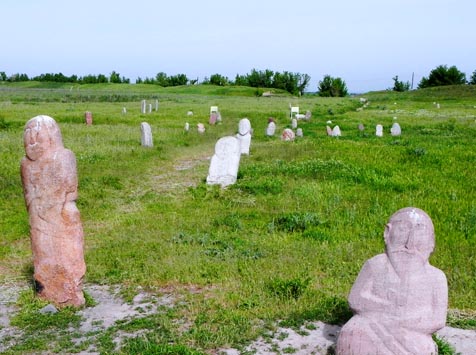kyrgyzstan
Osh is the second largest city in Kyrgyzstan. The population of
Osh is 218.8 thousand as for 2003. It is located in the eastern
part of the Fergana Valley, on the river Ak-Buura. There is a
debate regarding the etymology of the name of the city, the
scholars are still unable to reach an agreement. Religious
officials are trying to link the origin of Osh with legends, in
particular those related to the biblical Solomon - King
Solomon. One of versions says that Solomon led his army, and
there were a pair of yoke of oxen with plow ahead
of the army, when the oxen came to the famous mountain, Solomon
said, "Hosh"("Enough"). But none of the legends can not
explain either the fact of the origin of the city nor the
etymology of its name.
Osh is one of the oldest cities of Central Asia. The exact date
of its origin is unknown. Legends associate the origin of the
city with name of Alexander of Macedon, and even the Prophet
Solomon. The earliest mention of the city is in the chronicles
of the IX.
The emergence of the city is connected with the
settlement of the ancient farmers of the Bronze Age, found on
the southern slope of Mount Solomon. Further development of the
city was due to geographical location, which is in a fertile
valley at the foot of the Pamir and Pamir-Alai. Because of its
location in the intersection point of the trade caravan routes
from India and China to Europe.
In 1876, Osh was annexed
to Russia (after the conquest of the Khanate of Kokand). Since
1876 it was a county town and since 1939 Osh
becam the center of Osh region.
Osh is one of the Muslim religious centers of Central Asia. It
boasts with ancient mosques in the city center, as well as Mount
Sulaiman (Takht-i-Sulaiman, Solomon's Throne) which is one of
the places of pilgrimage for Central Asian Muslims.
Sights of Osh
The main attractions of Osh are the combined historical and
cultural museum-reserve, where you can enjoy the panoramic view
of the city, as well as many different wonderful exhposures,
rock carvings and inscriptions of Sulaiman-Too; fortress Ak-Bura
(I -XII ) monuments: Asaf ibn Burhiya (XI-XVII) mosque
Rawat-Abdullahan (XVII-XVIII) Mosque Mohammed Yusuf
Bayhodzhi-oglu (1909).
There are many parks,
historical and cultural monuments: the church of Archangel
Michael, the Mosque Sadykbay, Mosque Takht-i-Suleiman(Throne of
Solomon), Mosque Shahid-Tepa, a medieval bath, a memorial
complex "Night Fire", monuments to Lenin, Toktogul
Satylganov, Abdykadyrovu, Sultan Ibraimov, Orozobekov
Kurmanzhan-Datca, Alisher Navoi, Osh settlement: cave "Echoes of
Love" grotto "Swallow's Nest", the most beautiful places:
kyl-Kuprik, Beshik Tash, Chakka-Tamar, Max Tash, Sylyk- Tash, as
well as the ancient cemetery, the petroglyphs.












